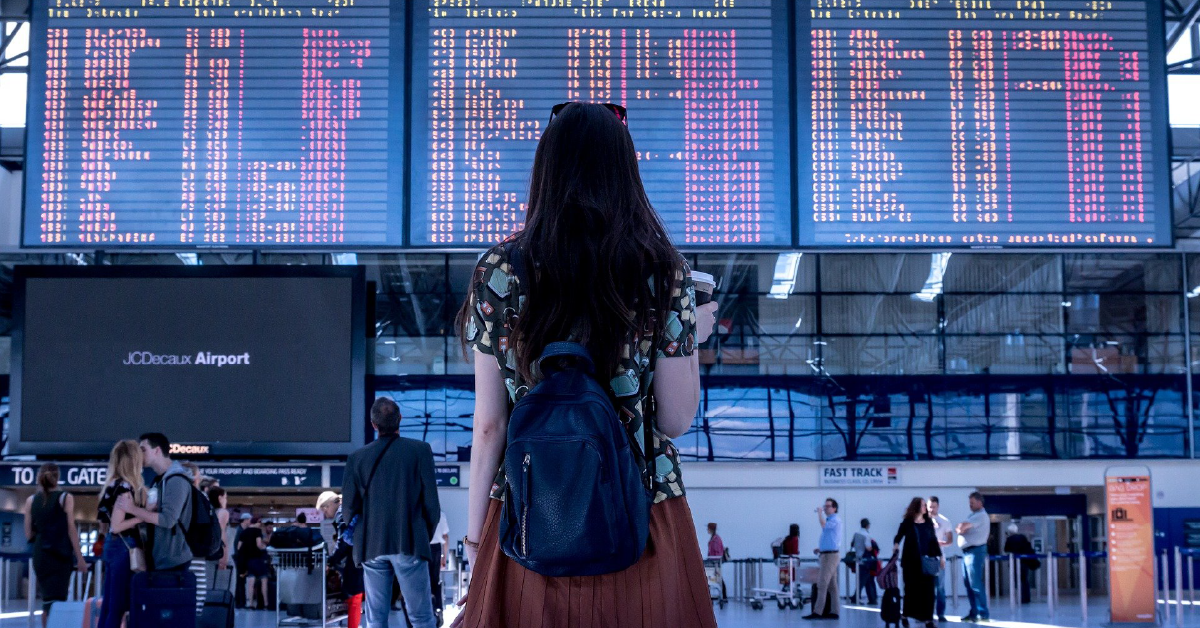Each telephone support call costs airlines $2.20. Major airlines even today employ thousands of customer service representatives. Yet, most travelers agree that communicating with airlines is not a very pleasant experience.
There are several reasons for this. One primary reason is that information is held by multiple entities within an airline. It’s nearly impossible for one desk or department to provide a single comprehensive service to respond to all queries.
Second, airlines are often clueless about who is impacted, to what extent and how to pre-empt the customer service call through better intelligence.
The information retrieval system used by most airlines is not helpful either. Therefore, the accuracy of the results is impacted.
Table of Contents
Chatbots for better customer service
Artificial Intelligence is expected to elevate the air travel experience for customers. Industry trends show that “14% of airlines and 9% of airports are using chatbots today, while 68% of airlines and 42% of airports have already adopt AI-driven chatbot services by 2020.”
Chatbots not only do an excellent job of retrieving information at top speed, they also allow questions to be asked in natural language rather than relying on keywords.
Also, the cost reductions can reach up to 60% per call.
7 Use cases of airport chatbots
From sharing flight statuses to recommending nearby restaurants and speeding up parking reservations, airport chatbots can handle over 100 airport-specific requests.
1. Engage, inform and support 24/7
From sharing flight statuses to recommending nearby restaurants and speeding up parking reservations; handle over 100 airport-specific requests.
Flight information
| General flight information | Flight delays |
| Flight times | Destinations |
| Gate and terminal locations | Check inter-miles points |
Airport transport
| Airport directions | Airport transportation information |
| Airport locations | Directions within the airport |
| Airport transportation costs |
In-Airport services
| Car rental information | Restaurant and duty-free shop locations and hours |
| Restaurant and shop listings | Airport maps |
Parking assistance
| Parking reservations | Payment invoices |
| Parking lot locations | Other parking information |
| Parking rates |
Baggage information
| Baggage dimensions | Traveling with pets |
| Restricted items | Lost baggage |
| Extra checked baggage |
General information
| Airport opening hours | Recommended arrival times |
| Security wait times | Airport accommodation options |
Special assistance
| Travelling with unaccompanied minor | Agent hand-off |
| Requesting special assistance |
COVID assistance
| Book RT-PCR tests | Download COVID reports |
| Destination-wise COVID guidelines | Book COVID hotels |

2. Make your passengers remember your airport for all the right reasons
- Superior experience with fewer agents – Instantly resolve up to 80% of passenger requests on their favorite voice and messaging platforms.
- Boost in-airport sales – Passengers can see when a nearby restaurant is open and whether a duty-free shop is located before or after security.
- Trained to tackle all your airport use cases – Provide airport information, share flight statuses, recommend nearby restaurants, speed up parking reservations and more.
3. Enhanced passenger experience
- Calculate performance indicators like waiting times, queue lengths, passenger flow throughput, area occupancy etc.
- Inform passengers about current wait times, alternate options, retail offers etc.
- Forecast future passenger flow based on historical passenger footprint data
- Access flight scheduling data sourced from airlines.
4. Reduce airline contact center cost
- Analyze flight data to check for flight options
- Notify passengers about any outages to enable alternate travel options.
- Decrease agent handling time.
- Book airline tickets without the intervention of an agent.
- Enable passengers to book tickets incorporating their travel preferences.
- Reduce the load on call centers.
- Deliver a better service experience than traditional email or web form.
- Gather information from frequent flyers to offer facilities and services that appeal to them.
5. Connect with passengers using social media
- Analyze data to predict hashtags and trending topics.
- Listen to audio feedback in multiple languages.
- Identify when an unexpected drop in sentiment occurs for your airline.
- Identify opportunities of interacting with customers online.
6. Improved on-ground management
- Effectively manage security, immigration and boarding queues.
- Enhanced airport layout and capacity planning.
- Optimize manpower, enhance productivity and maximize utilization.
- Monitor intrusion of passengers in secured areas.
7. Gain a 360-degree view of passengers
- Capture passenger experiences like seat preferences, meal choices or in-flight entertainment options across all touch points.
- Recommend products and services based on a passenger’s previous searches and bookings.
- Recommend destinations, advanced booking options, pricing options or discounts.
- Offer personalized coupons or reimbursement to recover from service failures.

Airline chatbot examples
Airports across the world have gradually implemented customer self-service projects to allow travelers to access information 24/7 on their flights, bookings, mileage and so on.
These include in many cases chatbots, but also other self-service tools like smart FAQ or help centers. Let’s look at a couple of examples.
Innovating Swedish airports with chatbots
The Swedish airports implemented a chatbot in 2018 which has been well received by passengers. The chatbot is based on Facebook Messenger. It offers flight information, queue line information and contains details on all of the services offered within the airport as well as the transport options that are available to and from the airport.
Vienna Airport adopting AI-chatbot to provide useful information
Vienna Airport launched an artificial intelligence (AI) chatbot service. The chatbot, called Bebot, is available for visitors at the airport’s business site, Vienna AirportCity and provides answers to user questions regarding COVID-19, facility information and directions.
The chatbot also helps gather user insights, enabling Vienna AirportCity to identify trends and opportunities for improvement at the airport.
Things to consider before you opt for a chatbot
1. Ensure security
Users must be sure that their payment details or passport information will stay safe.
Regardless of the chosen platform, security is in your hands. Aside from a simple user authentication, there are other ways to secure a customer’s info, such as timeouts, Touch ID or retina scans, end-to-end conversation encryption, and self-destruction of sensitive messages.
2. Offer a fuller experience
People often turn to chatbots when they do not have the time or patience to browse unwieldy mobile websites. So, make sure that a user will not need to google each significant detail that a bot can provide itself. For instance, if you suggest nearby hotel options, include each hotel’s rating and mention whether there’s a cancellation fee, airport pick-up and so on.
3. Stay connected
Don’t abandon your users after helping them. Message them after the flight or hotel check-in, ask them to rate their satisfaction with the chosen service, or offer suggestions about local restaurants and events. Make sure your messages are engaging, unobtrusive and caring. Encourage customers to come back and fall into a loyalty loop, converting one-time users to lifelong clients.
4. Eliminate the language barrier
To provide a multilingual experience and greatly expand your audience, consider creating a chatbot that people can use regardless of their native language.
5. Develop a chatbot persona
Your chatbot is a part of your brand, sometimes the first part to represent your brand to the customer. So, humanize it, and give it a suitable name and an image. Think of the way it will interact with your customer: which emoji it will use, in what manner it will converse, and how it will influence your brand.

A botful future?
According to a study by Twilio, nine out of ten users would like to connect with brands via messages. Along with providing instant response throughout a traveler’s journey, bots are becoming even more personal than human operators – almost like one of the trusted friends in your contact list.
Bots also have a positive impact on sales revenue. In case of airports, chatbots address some of their most pressing challenges: support costs, ancillary sales and customer loyalty.
From the perspective of passengers, instant, self-service support results in an easier, more personalized and overall enhanced customer experience. A better customer experience not only impacts the conversion rate, but it also leads to a higher customer lifetime value.
Watch a demo of our airport chatbot here: https://www.instagram.com/tv/ChZxXJ4Agd3/?igshid=YmMyMTA2M2Y=













